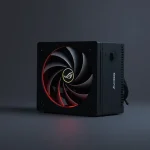OpenAI acquires 10% of AMD to challenge NVIDIA in AI

As 2025 unfolds, the tech world is witnessing a significant shift, marked by the strategic acquisition of a 10% stake in AMD by OpenAI. This partnership is set to reshape the landscape of artificial intelligence (AI) and semiconductor manufacturing. The implications of this deal are profound, not just for the companies involved, but also for the broader tech industry.
Shortly after the announcement, analysts predict a potential surge of around 25% in AMD's stock price once trading opens. This anticipated increase reflects the high expectations surrounding the partnership and the value it promises to create. Furthermore, this move comes on the heels of a similar investment by the U.S. government and NVIDIA in Intel, indicating a fierce competition among chipmakers.
Reasons Behind OpenAI's 10% Stake in AMD
OpenAI's acquisition of a minority stake in AMD is not merely a financial investment; it signifies a strategic alliance aimed at enhancing AI capabilities. By investing in AMD, OpenAI secures a vital supply of chips specifically designed for AI applications. Historically, OpenAI has relied heavily on NVIDIA for its GPU needs, which has exposed it to market volatility and supply chain constraints.
This investment will provide OpenAI with access to a more diverse range of GPUs for both training and inference tasks. Such diversification is crucial for mitigating risks associated with relying on a single supplier. Additionally, OpenAI will gain influence over AMD's strategic direction, allowing it to align hardware improvements with its software requirements.
With this collaboration, OpenAI can seamlessly integrate its software stack with AMD’s hardware, potentially creating a more optimized and efficient ecosystem that could rival NVIDIA’s dominant CUDA platform.
In summary, this acquisition allows OpenAI to:
- Ensure a reliable supply of GPUs at competitive prices.
- Reduce dependency on NVIDIA's ecosystem.
- Influence future hardware developments at AMD.
- Enhance software performance on AMD hardware.
"The leadership of AMD in high-performance chips will enable us to accelerate progress and bring the benefits of advanced AI to the world more quickly," said Sam Altman, CEO of OpenAI, in a statement regarding the new partnership.
Benefits for AMD from the Acquisition
Although the exact financial terms of the stake acquisition remain undisclosed, it is known that OpenAI will purchase shares valued at approximately $160 million at a symbolic price of $0.01 per share. This means that the total cost for acquiring 10% of AMD could be as low as $1.6 million, a remarkably low entry point for such a significant stake.
However, this nominal price comes with substantial obligations: OpenAI is required to establish data centers with a computing capacity of 6 gigawatts using AMD's GPUs, specifically the AMD Instinct MI300 series and future generations. To put this into perspective, achieving such a capacity would necessitate around 8 million GPUs.
This arrangement not only provides AMD with financial backing but also ensures that OpenAI's software suite will be fully optimized for AMD's hardware, enhancing performance and efficiency across the board.
Moreover, part of the shares will be under a lock-up agreement, becoming accessible at the predetermined price of $0.01 only when AMD's stock reaches a value of $600 per share. Currently, AMD stocks are hovering around $165, with expectations for prices to reach approximately $200 by the end of the trading day.
Ultimately, AMD is positioning itself to compete more effectively with NVIDIA in the AI hardware market. The symbiotic nature of this agreement ensures that both OpenAI and AMD can leverage each other's strengths for mutual benefit.
Can AMD Compete with NVIDIA in AI?
As the AI landscape continues to evolve, the spotlight is increasingly on AMD as it seeks to position itself as a formidable competitor to NVIDIA. The partnership with OpenAI could provide the necessary momentum for AMD to challenge NVIDIA's long-held dominance in the GPU market.
Key factors that will influence AMD's competitive edge include:
- Technological Advancements: Continuous innovation in chip design and manufacturing.
- Strategic Partnerships: Collaborations with AI-focused companies like OpenAI to enhance capabilities.
- Market Penetration: Expanding reach within cloud computing and data centers.
By focusing on these areas, AMD can potentially carve out a significant share of the AI hardware market, particularly as demand for AI processing power continues to surge.
Why NVIDIA is Investing in OpenAI
NVIDIA's interest in OpenAI is also notable, as the company has been one of the primary beneficiaries of the AI boom. With its dominance in the GPU market, NVIDIA has realized the importance of AI and machine learning technologies in driving future growth. By investing in OpenAI, NVIDIA not only secures a partnership with one of the leading AI research organizations but also gains insights into cutting-edge developments in AI.
This strategic investment allows NVIDIA to:
- Enhance its product offerings in alignment with AI advancements.
- Stay ahead of emerging trends in the AI sector.
- Maintain strong relationships with influential players in the tech industry.
Is AMD Surpassing NVIDIA?
While AMD is making significant strides, whether it is surpassing NVIDIA remains a nuanced discussion. The competitive dynamics between these two companies are complex, shaped by rapid technological developments and shifting market demands.
Recent advancements in AMD's chip technology may position it to offer compelling alternatives to NVIDIA’s offerings. However, NVIDIA's entrenched market presence and established ecosystem create substantial barriers. Factors to monitor include:
- Innovations in chip architecture and performance.
- Market responses to new product launches from both companies.
- Collaboration outcomes with AI entities like OpenAI.
Who is the Biggest Competitor of NVIDIA in AI?
In addition to AMD, several other companies are emerging as noteworthy competitors to NVIDIA in the AI domain. These include:
- Intel: With its focus on AI-optimized processors and acquisitions of AI-focused startups.
- Google: Leveraging its Tensor Processing Units (TPUs) for AI workloads.
- Microsoft: Investing heavily in AI technologies and cloud services.
As the AI race intensifies, the landscape will continue to shift, providing opportunities for both established players and new entrants to redefine their positions in the market.
For further insights into the evolving dynamics of AI and technology partnerships, you might be interested in this video:




Leave a Reply